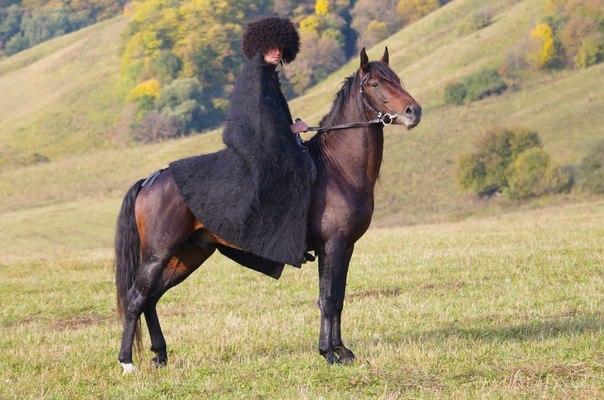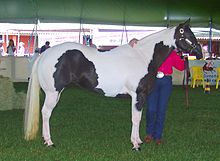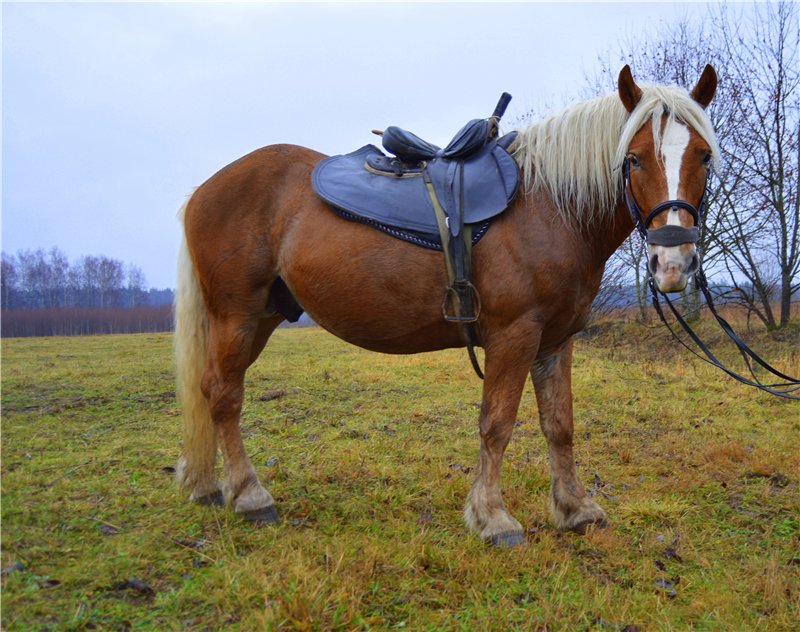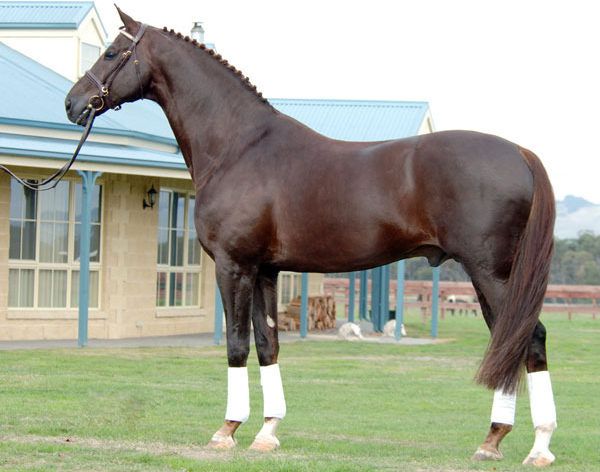Shi
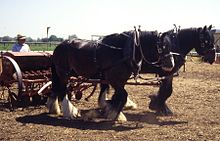 Shire (English heavy truck) is a British breed of heavy truck horses. Horses of this breed are tall (165-185 cm at the withers, sometimes up to 219). Shires at different times set world records as the largest horses, and as the tallest horses. The name comes from the English “shir” – county. The Shire Mountain or Curt Horse breed, descended from local mares and Dutch stallions, is very famous and widespread. Despite its ancient origin, it is not entirely homogeneous in mass. Its type is highly variable – from a horse of extraordinary size and weight, suitable only for riding in steps, to large and folding ones, suitable already in a plow and cart. The suit is diverse; bald patches on the head and white stockings, often on the same hind legs, are characteristic. Usually black, bay, gray and also piebald. All parts of the body are developed in proportion; a very important article is the broad chest, back and the same sacrum. Like suffolks, they eat well and hold the body firmly. Some shortcomings of the breed: dampness, strong freeziness and not always sufficient squatting, are likely to disappear soon, since specimens with these defects are considered much lower. Crossing shires with blood breed mares is very common in England and gives suitable breeding harness horses.
Shire (English heavy truck) is a British breed of heavy truck horses. Horses of this breed are tall (165-185 cm at the withers, sometimes up to 219). Shires at different times set world records as the largest horses, and as the tallest horses. The name comes from the English “shir” – county. The Shire Mountain or Curt Horse breed, descended from local mares and Dutch stallions, is very famous and widespread. Despite its ancient origin, it is not entirely homogeneous in mass. Its type is highly variable – from a horse of extraordinary size and weight, suitable only for riding in steps, to large and folding ones, suitable already in a plow and cart. The suit is diverse; bald patches on the head and white stockings, often on the same hind legs, are characteristic. Usually black, bay, gray and also piebald. All parts of the body are developed in proportion; a very important article is the broad chest, back and the same sacrum. Like suffolks, they eat well and hold the body firmly. Some shortcomings of the breed: dampness, strong freeziness and not always sufficient squatting, are likely to disappear soon, since specimens with these defects are considered much lower. Crossing shires with blood breed mares is very common in England and gives suitable breeding harness horses.
All solid suits are acceptable. It is considered the tallest horse in the world. The champion was a gelding named Sampson, his height at the withers 2.2 meters, weight 1520 kg. Horse was born in 1846 in Toddington Mills, Bedfordshire, England. Sampson, belonged to Mr. Thomas Cleaver.
Shire
There are weight from 1000 to 1800 kg. A very strong breed, one horse can move and pull a plane weighing 2-3 tons.
Story
The Shire breed was founded in the mid-18th century, although its origin is much older. The breed society was formed in 1876, and in 1878 the first stud book was released. At the end of the 19th and beginning of the 20th centuries there were a large number of shires, and many were exported to the United States. With the progressive mechanization of agriculture and transport, the need for heavy trucks quickly decreased, and by the 1960s their number had dropped from a million or more to several thousand. Abundance has begun to rise again since the 1970s, but the Rare Breeds Survival Fund still believes this breed is in danger.
Outside the United Kingdom, tribal societies and studbooks exist in Australia, Canada, and the United States.
Although oxen was used for most agricultural work in the 18th century, horses suitable for transport, a plow or chariots were sold at the Smithfield Market in London as early as 1145. The English Great Horse was valued during the reign of Henry VIII, when stallions smaller than “fifteen handfuls” could not be saved, but the increasing role of gunpowder put an end to the use of heavy horses in battle. Oliver Cromwell’s cavalry preferred lighter and faster horses, and instead large horses were used for hard work. During the sixteenth century, Dutch engineers brought Friesian horses with them when they came to England to drain the swamps, and these horses probably had a significant impact on what became the Shire breed.
From this medieval horse in the 17th century, an animal called the Old English Black Horse appeared. The Black Horse was upgraded by followers of Robert Bakwell from Disley Grange in Leicestershire, resulting in a horse that is sometimes called “Bakewell Black.” Bakewell imported six mares from Holland or Flanders, which is noteworthy because breeders tended to concentrate on improving the male line. Two different types of black horses have been developed: the Fen or Lincolnshire type and the Leicester or Midlands type. The Fen type tended to be larger, with large bones and thick hair, while the Midlands type had greater stamina, being thinner.
Gray Shire working in agriculture
The term “Shire horse” was first used in the middle of the XVII century, and incomplete records begin to appear at the end of the XVIII century. The Packington Blind Horse from Leicestershire is one of the most famous horses of the era, whose direct descendants were recorded from 1770 to 1832. This horse is usually called the fundamental stallion of the Shire breed, and he stood at the stable from 1755 to 1770. During the 19th century, the Shires were widely used as a harness to transport goods from docks through cities and villages. Rough roads created the need for large horses with extensive muscles.
In 1878, the English Society of Sledding Horses was formed, and in 1884 it changed its name to the Shire Horse Society. The society published a studbook, the first edition of which in 1878 contained 2,381 stallions and records dating back to 1770. In the period from 1901 to 1914, 5,000 Shirov were registered in the company annually.
